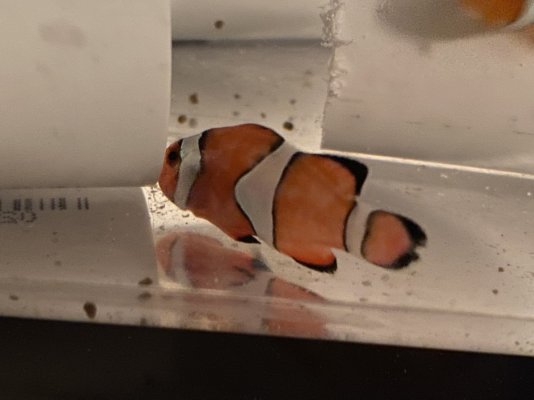Hi all,
I believe I have an outbreak of cryptocaryon in my display tank. This includes two clowns, a royal gramma, and a goby. One of the clowns looked pretty thin and ragged with white spots. The other clown looked and behaved normally. The royal gramma was flashing, but no spots. The goby had normal behavior but a couple of visible spots.
I moved all the fish into a hospital system for a hyposalinity treatment at 15ppt. The healthier clown, the royal gramma, and the goby all look good. No more visible spots on the goby.
The clown that looked to be in the worst shape is not doing well. Breathing rapidly, ragged fins, and now patchy pigment loss. Is there something else that this could be besides cryptocaryon? I don’t think this fish is going to recover, but I don’t want to lose the other three fish to something that won’t be affected by the hyposalinity.
I am aware that a skin scrape would be the best diagnosis, but no microscope at home. Thanks in advance for any advice.

I believe I have an outbreak of cryptocaryon in my display tank. This includes two clowns, a royal gramma, and a goby. One of the clowns looked pretty thin and ragged with white spots. The other clown looked and behaved normally. The royal gramma was flashing, but no spots. The goby had normal behavior but a couple of visible spots.
I moved all the fish into a hospital system for a hyposalinity treatment at 15ppt. The healthier clown, the royal gramma, and the goby all look good. No more visible spots on the goby.
The clown that looked to be in the worst shape is not doing well. Breathing rapidly, ragged fins, and now patchy pigment loss. Is there something else that this could be besides cryptocaryon? I don’t think this fish is going to recover, but I don’t want to lose the other three fish to something that won’t be affected by the hyposalinity.
I am aware that a skin scrape would be the best diagnosis, but no microscope at home. Thanks in advance for any advice.















